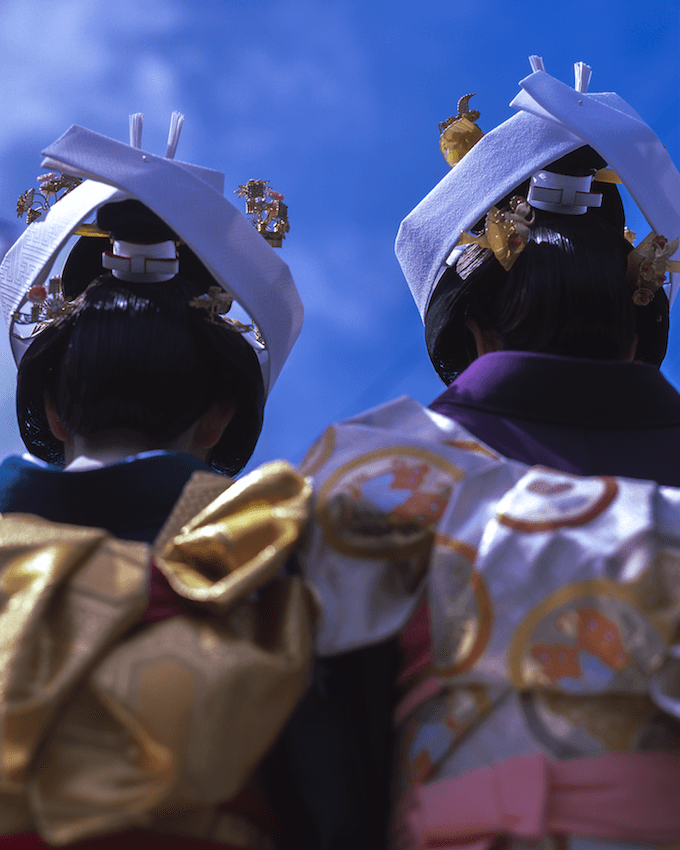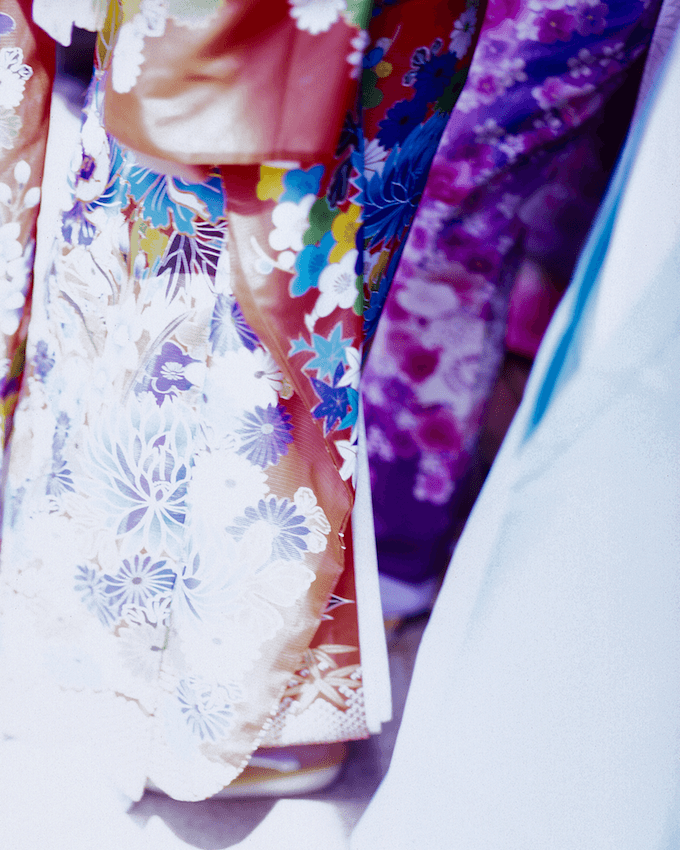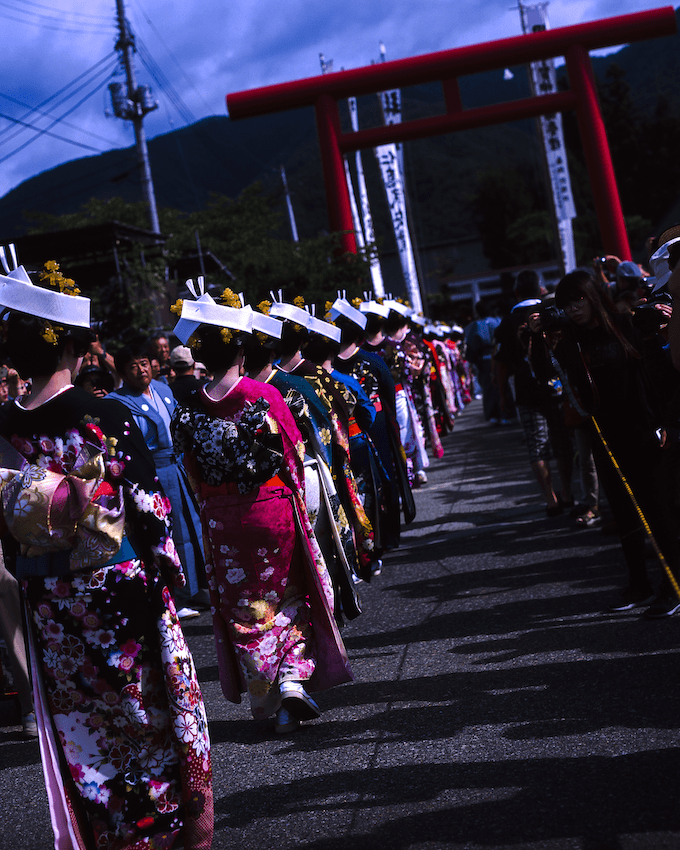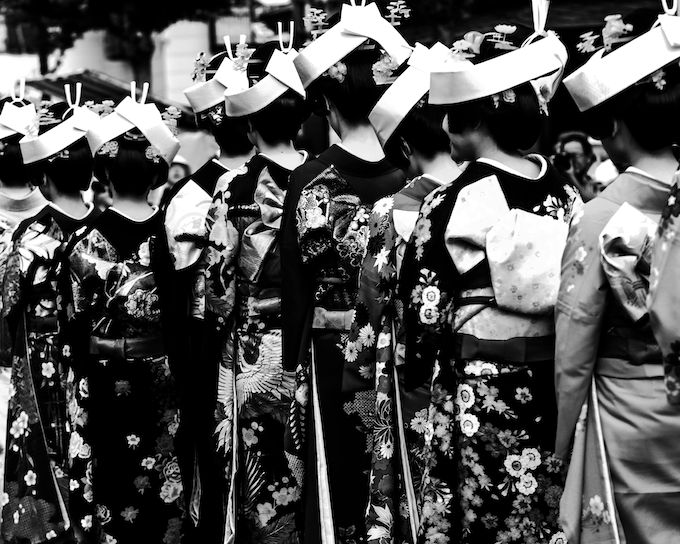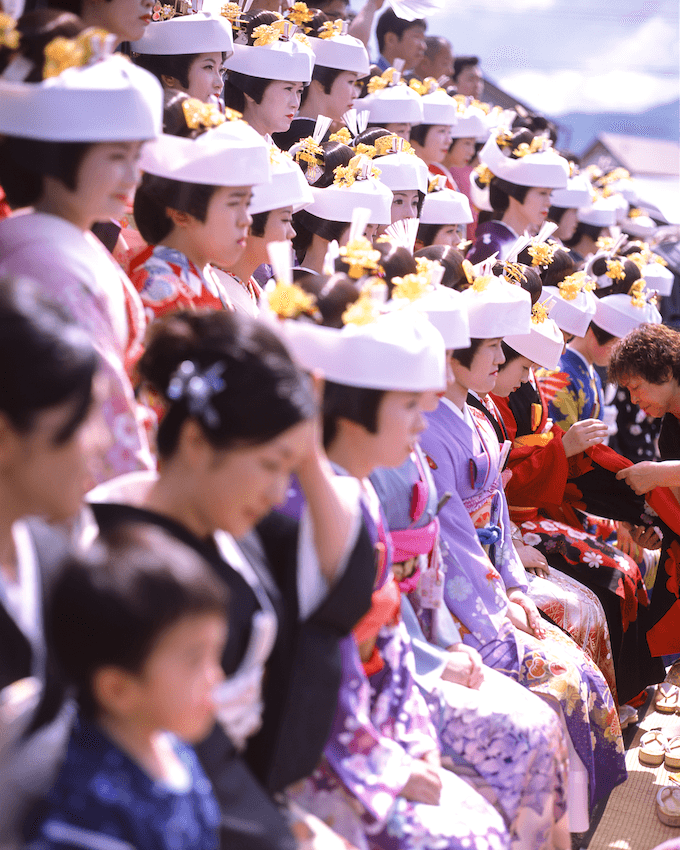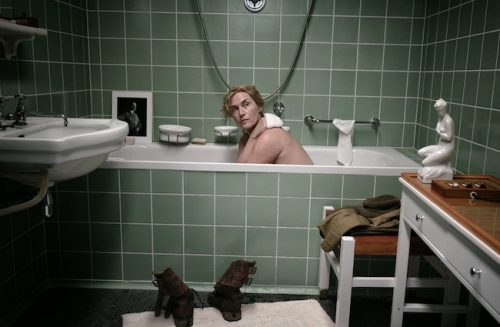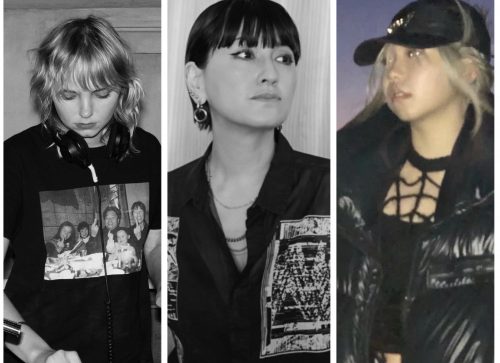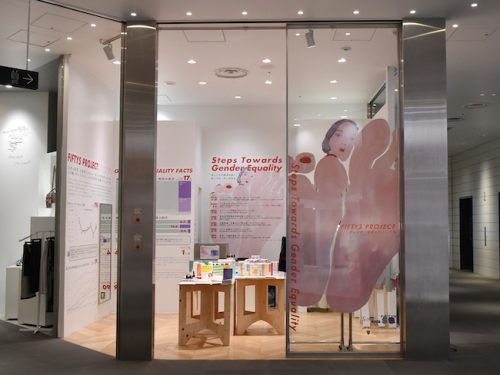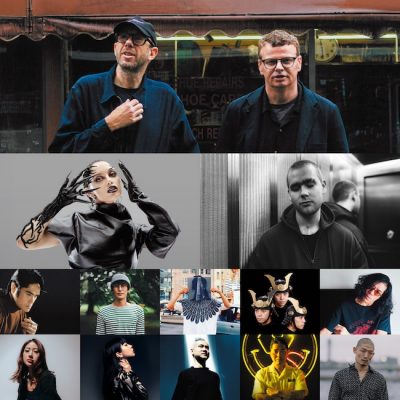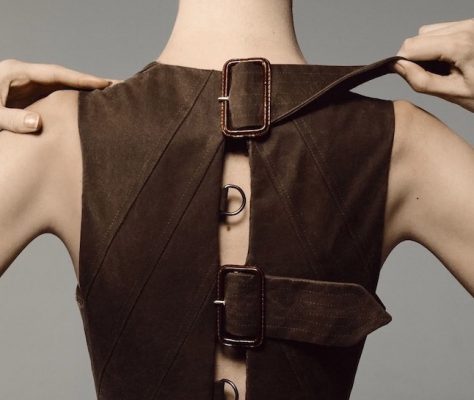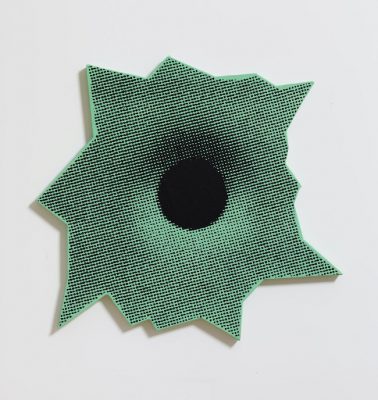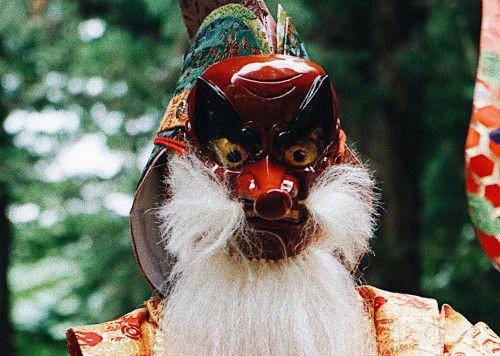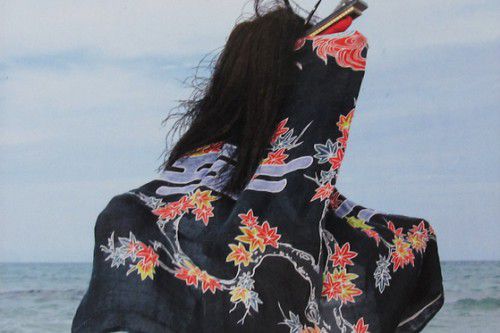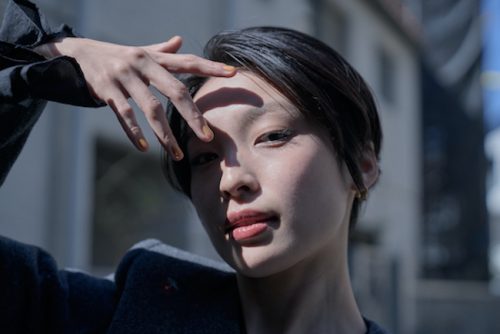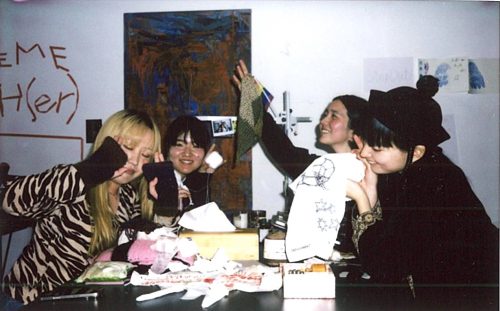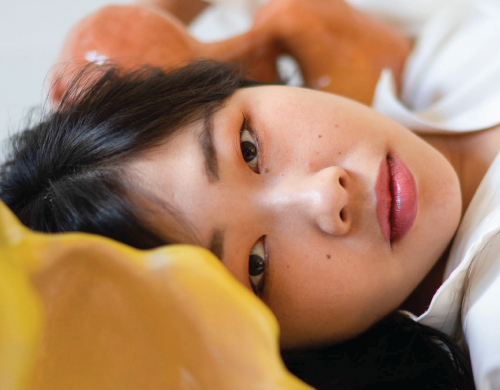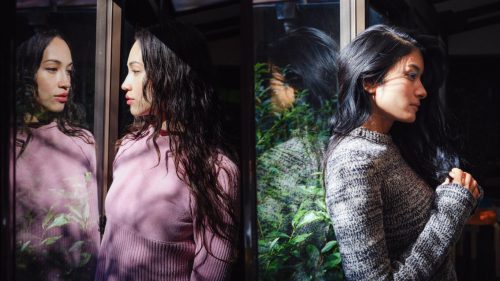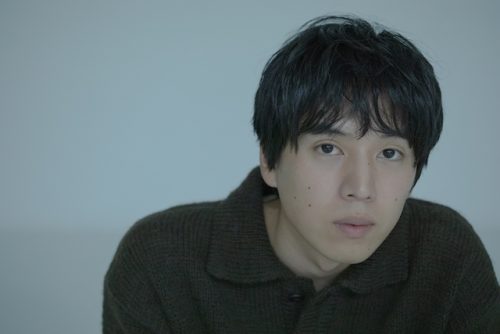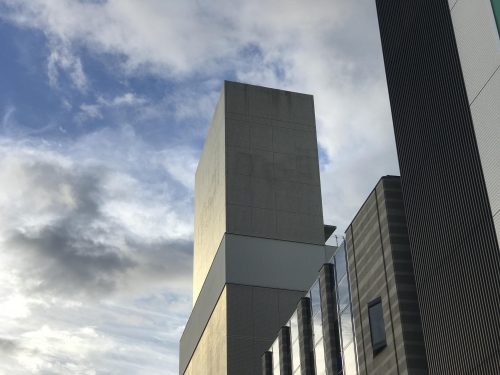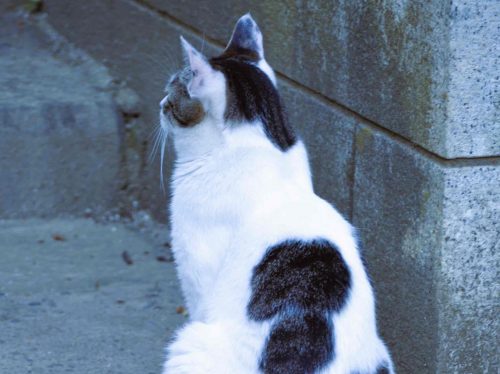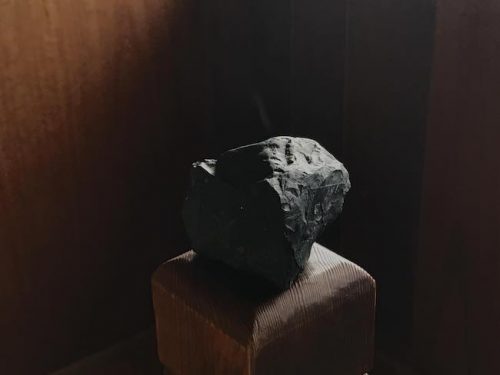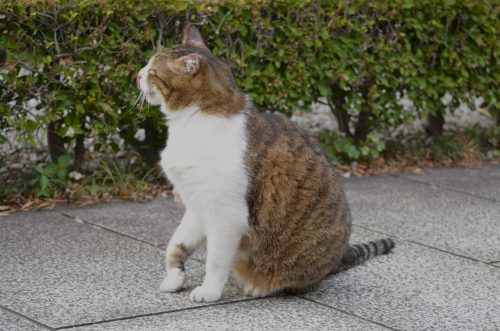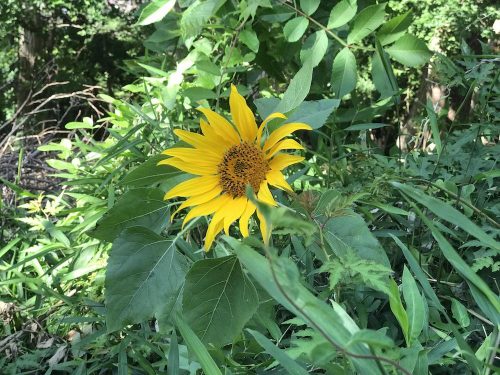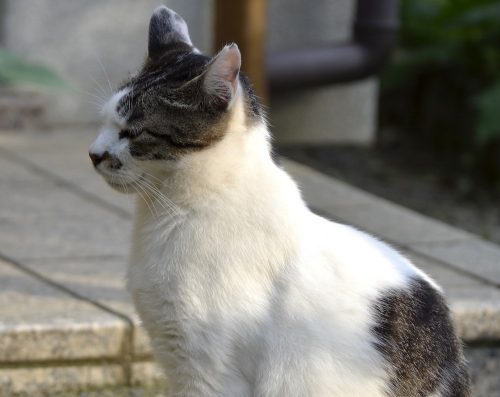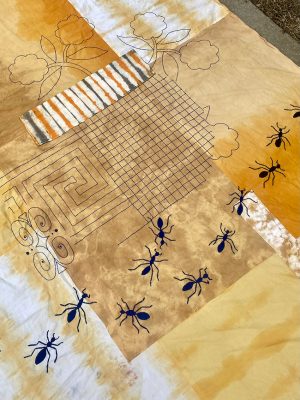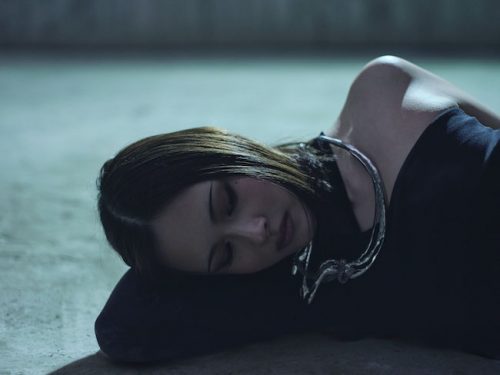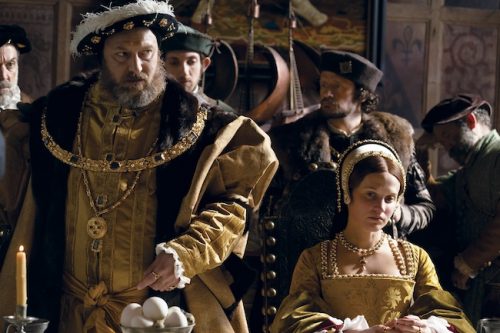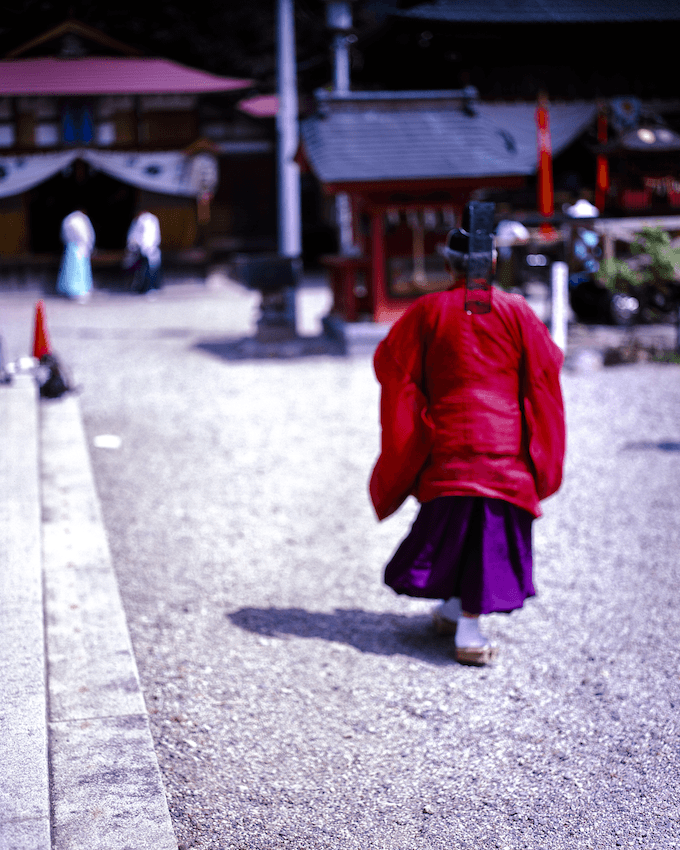
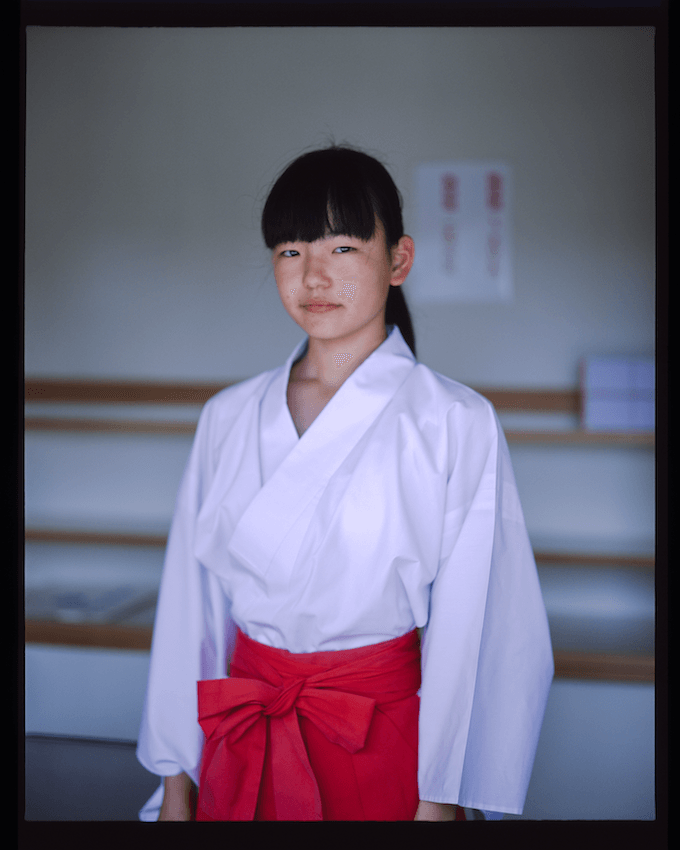
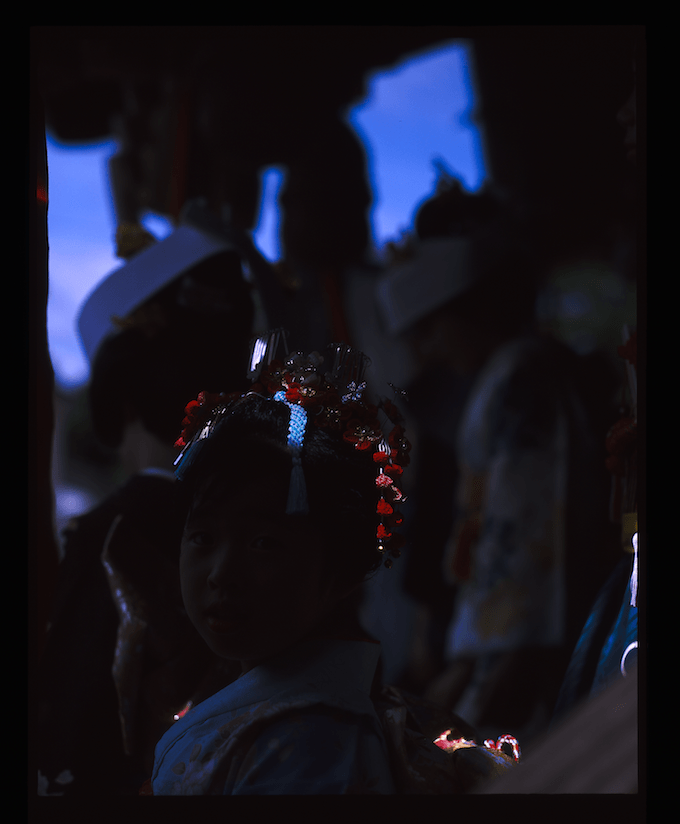
京都祇園祭、博多祇園山笠と並ぶ“日本三大祇園祭”のひとつで800年にも及ぶ歴史と伝統を誇る「会津田島祇園祭」。呼び物の七行器行列は、男女ともに正装でお供え物をする儀式だが、特に女性が美しい花嫁姿で町内を練り歩くことから別名花嫁行列とも呼ばれ、シャンギリというお囃子が流れる中、花嫁姿の女性が神社に向かって行列し約1キロを練り歩く。災いから人々を守る祇園祭の祭神“牛頭天王”に七つの器に盛られた供物を捧げ、厄除け・災難・疫病や五穀豊穣・良縁結びを祈願する。
冠婚葬礼は人の一生における最も特別な日であり、中でも婚姻儀礼は、生家から嫁入りする家へ花嫁の肉体と共に魂が移動すると考えられてきた。古来の日本人にとっての嫁入りは、死からの再生といった観念で捉えられ、通常の「生から死へ」という時間の流れを逆転する「非日常性」を強く認識させる役割をもった。
花嫁の被る角隠しはハレの衣服であり、悪霊に取りつかれやすいと信じられていた新婚夫婦(特に花嫁)に被せることで上から降りかかる悪霊を防ぐという意図があったのが転じて、だんだんとケガレを防ぎ無病息災を願うという働きを持つようになったのである。
祇園信仰の目的である疫病をはじめとした共同体の災いを祓うことが、婚姻儀礼における特異な非日常性と相関性を持ったことが七行器行列のはじまりだ。
祇園祭が行われる時期は雨が多いため、現在ではレンタルの着物を纏う参加者がほとんどであり、当日の未明あたりから着付けの準備が行われる。かつては祭事担当の家ゆかりの者しか参加できない儀式だったが、今では一般の人々も参加でき、また着付けやヘアメイク、着物のレンタル料は4万円まで南会津町から助成される。その行列の荘厳さと艶やかさに惹かれ、地元に住む人々のみでなく他地域から訪れる観光客も多い。また、見物人だけではなく毎年参加への応募が多数あるという。参加者は静粛な行列が終わると、なかなか纏うことのない着物を収めようと記念撮影をする光景も。
特別な機会にハレの衣装を着て神聖な儀式に参加するということは、現代にも失われていない意義のようだ。
Aizutajima Gion Festival is one of the three major Gion Festivals in Japan along with Kyoto Gion Festival and Hakata Gion Festival, which has a history that lasted for the past 800 years. “Nanahokai Gyouretsu” is a parade with men and women in their formal costumes. It is also called the Bride’s Parade because of the beauty of women as a bride is well shown in their formal wedding costumes. The parade goes through the crowd for about 1000 km and right to the shrine.
The ritual god of Gion Festival appears to be the figure with a head of a bull served in sev-en plates for the purpose of the prayers. People wish to stay away from disasters and dis-eases; and to be grated with good marriage and harvest.
Weddings and funerals are considered as the most special day in the lifetime of a person. A wedding is like a ceremony of moving the soul of the bride from her birthplace to her married one’s house. Japanese people recognize the idea of regeneration as crucial from ancient times. The concept of life and death is perceived as it has to do with the flow of time.
The costume of the Bride on Hare’s Day is designed for the purpose of keeping away from the evil power which will be brought to the husband’s family especially by the bride.It is believed that brides have a tendency to be obsessed by evil spirits and so the wish of a disaster-free life is made. That is what “Nanahokai Gyouretsu” is mainly about.
It rains a lot at the time when Gion Festival is held. People would rent kimono and dress up before the festival begins.The ritual ceremonies were done by only families related to it, but nowadays it is allowed for everyone to attend. The fee of the hair-make and kimono that up to 4,000 is provided by the town of Minamiazu. The extraordinary parade is getting the attention of people not just from local, but also visitors from all over Japan.
The number of people participating in the parade is also growing. Participants get to take pictures in their kimonos since it is a rare opportunity.
Wearing special costumes on Hare’s Day and joining the sacred ritual parade is a special occasion even in modern days.
会津田島祇園祭(三日間開催中、七行器行列は二日目に実施)
場所:会津田島駅福島県南会津郡南会津町田島字西番場甲358-3
詳しくはこちら 南会津町観光物産協会公式ページ(https://www.kanko-aizu.com/gion/)
photography Yuichiro Noda
text Shiki Sugawara
